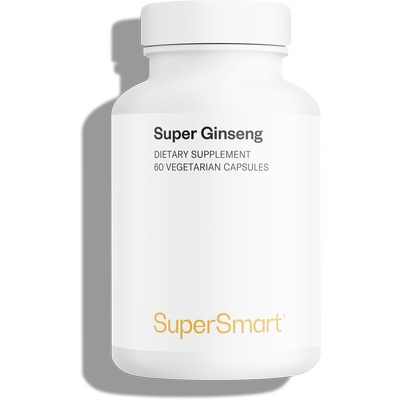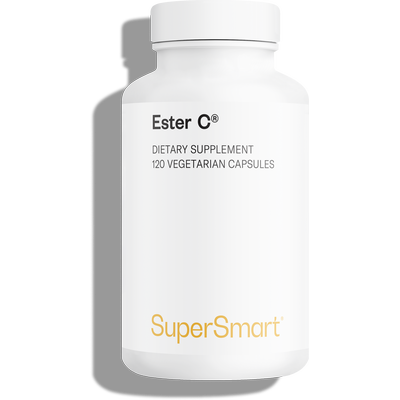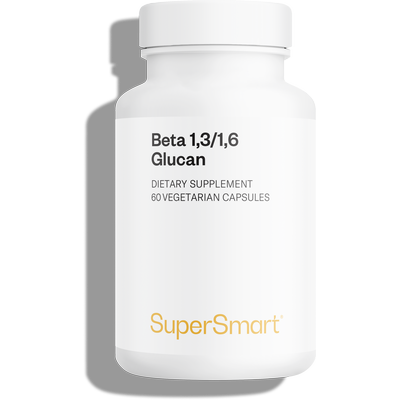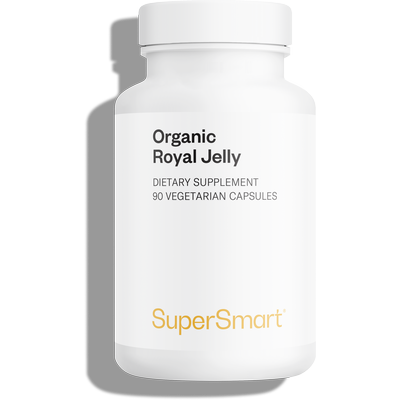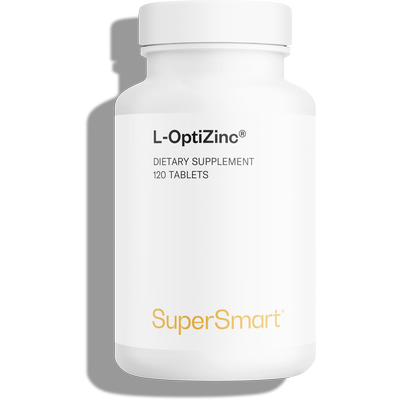As the cold weather returns, here are 9 exceptional, natural compounds to help prevent winter infections

Each year at this time, we all hope for the same thing: to escape the infections of winter and make it through to spring in sparkling form. Some people just sit back and hope for the best, but there’s a good chance they’ll end up catching a cold, flu or gastroenteritis – or even all three. Others choose to significantly reduce their risk by turning to natural strategies - but not just any strategies: they choose those backed by both empirical and scientific evidence. The good news is that these natural options are growing in number and have never been more accessible! Conversely, the sceptics who used to scorn such natural approaches are now keeping a low profile…
What can you do to reduce your risk of winter infections?
Would you be able to explain to a child how a viral infection occurs? And how it can then develop into a bacterial infection? If not, you’d do well to find out, as the first secret to protecting yourself from infections is to really understand how they work.
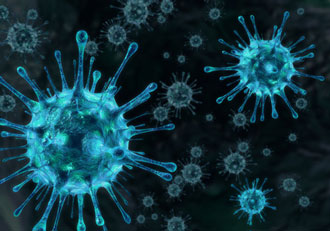 Several times a year, the body comes into close contact with a cold or flu virus which it has no problem shaking off. But every now and then, one comes along which is not so easily repelled. As the temperature drops in winter, viruses gain an advantage. It’s a time when the body’s defences are weakened by the cold, and when encounters with viruses are more frequent, due both to a lack of ventilation, and to the higher survival rate of viruses in periods of cold weather and weak sunshine.
How many viruses does the body have to encounter before it succumbs?
This depends on the type of virus. In the case of gastroenteritis, for example, 10-100 viral particles may be enough to overpower the body’s defences and trigger an infection, but this number varies enormously depending on the state of your immune system. If your defences are less than optimal, if they’re too busy fending off another intruder or fighting oxidative stress, it will be relatively easy for a virus to infect you. They generally gain access via the coldest parts of the body such as the nose, as they spread best at a temperature of between 33° and 35 C° (lower than the body’s core temperature). They will not, however, reach the bronchi because body temperature rises progressively as you move down the respiratory tract, but they will cause various symptoms and considerably weaken the mucous membranes.
Several times a year, the body comes into close contact with a cold or flu virus which it has no problem shaking off. But every now and then, one comes along which is not so easily repelled. As the temperature drops in winter, viruses gain an advantage. It’s a time when the body’s defences are weakened by the cold, and when encounters with viruses are more frequent, due both to a lack of ventilation, and to the higher survival rate of viruses in periods of cold weather and weak sunshine.
How many viruses does the body have to encounter before it succumbs?
This depends on the type of virus. In the case of gastroenteritis, for example, 10-100 viral particles may be enough to overpower the body’s defences and trigger an infection, but this number varies enormously depending on the state of your immune system. If your defences are less than optimal, if they’re too busy fending off another intruder or fighting oxidative stress, it will be relatively easy for a virus to infect you. They generally gain access via the coldest parts of the body such as the nose, as they spread best at a temperature of between 33° and 35 C° (lower than the body’s core temperature). They will not, however, reach the bronchi because body temperature rises progressively as you move down the respiratory tract, but they will cause various symptoms and considerably weaken the mucous membranes.
It’s at this precise moment that pathogenic bacteria come into playsecondary bacterial infections which manifest in sinusitis, pharyngitis, bronchitis, otitis or sometimes even pneumonia. That’s why a cold can sometimes drag on for weeks! Without these secondary bacterial infections, colds in themselves do not cause any troublesome complications.
To fight winter infections, you therefore need to act at three levels:
- Stimulate the immune system to increase the body’s defences as much as possible and prevent viruses from entering the body.
- Support the immune system in its efforts to prevent the virus from spreading.
- Support the immune system in fighting against secondary bacterial attacks.
Stimulate the immune system: 5 natural compounds to boost the defences
The most obvious way of reducing the risk of viral infections is to wash your hands several times a day (after blowing your nose, after contact with anyone who’s unwell, or before preparing a meal, etc) in order to stop viruses accessing their favourite sites: the nose and throat. Ventilating your home and place of work in order to lower the risk of encountering a virus is also sensible, as is covering your extremities (head and hands) to prevent these key parts of the body from becoming numb with cold. These common sense measures are not, however, infallible: short of confining yourself to home, cut off from the outside world, it’s impossible to avoid all encounters with viruses over the winter period. Those who frequent crowded places, who travel on public transport, or who work with older people or children, are at particular risk of infection as they are inevitably going to come into contact with multiple viruses.
It’s therefore important to anticipate such encounters and ensure your immune system is as effective as possible for when they occur. There’s nothing revolutionary about this strategy: it was used for thousands of years before being dismissed by modern medicine with its resolute focus on treatment rather than prevention. Nowadays, we know very little about the plants that surround us or their medicinal properties because such knowledge is no longer being passed on from one generation to another. This is a significant loss because this sensory experience of plant life, acquired through observation and experimentation, is the result of thousands of years of collective work on a massive scale. Fortunately, however, things are starting to change. In the face of mounting resistance brought on by excessive prescribing of antibiotic drugs, scientific research is gradually rediscovering this ‘ancestral catalogue’, and is for the first time, explaining the mechanisms of action of the plants it comprises.
Though it’s far from complete, this ‘catalogue’ constitutes a useful foundation, including as it does hundreds of plant and fungi compounds capable of improving the immune response. But if we had to choose just five, if we had to restrict ourselves to the crème de la crème, we’d definitely keep the following.
1) Ginseng
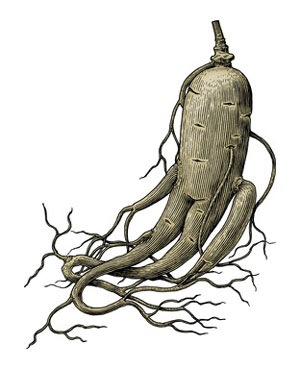 Panax ginseng is probably the most famous plant in Asia. Recognised by both traditional Chinese medicine for its general tonic effects, and now by the World Health Organization, it unquestionably helps to stimulate the immune system and fight physical fatigue.
Panax ginseng is probably the most famous plant in Asia. Recognised by both traditional Chinese medicine for its general tonic effects, and now by the World Health Organization, it unquestionably helps to stimulate the immune system and fight physical fatigue.
What’s behind its immune-stimulant effect? Scientific research has shown that the active substances responsible, ginsenosides (1), stimulate the hormone system, and increase both the mobility of immune defenders and the ability of macrophages to neutralise intruders.
The scientific data from both animal and human studies is convincing. Compared with placebo, twice-daily administration of a ginseng extract standardised in ginsenosides Ginseng 30%, was associated in an independent study with a clear decrease in risk of contracting a respiratory infection (2).
Recommendation: depending on the initial degree of fatigue and on individual experiences, supplements can be taken for a period of between two weeks and three months.
2) Vitamin C
Not only is vitamin C a valuable ally in improving a wide range of physiological disorders, it can also play a key role in preventing winter infections. It stimulates the immune system to produce more T lymphocytes which attack and destroy a great many pathogens.
Its immune-stimulant effect has been shown to be even stronger in those weakened by harsh weather conditions (such as the cold) or intense physical exercise. A meta-analysis showed that subjects exposed to intense cold or who were training for a physically-demanding race, and who took vitamin C for 3-8 weeks, had a 50% lower risk of catching a cold (3).
Recommendation: you can start taking vitamin C from autumn up until the end of winter, especially as the most vitamin C-rich fruits and vegetables are scarce at this time of year.
3) Mushrooms, and in particular the polysaccharides they contain
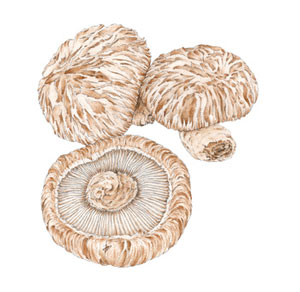 Mushrooms are one of the most promising areas of natural medicine. They contain exceptional compounds – the polysaccharides beta-glucan and alpha-glucan – the therapeutic potential of which is only now starting to be discovered. These long-chain non-digestible carbohydrates act as soluble fibre in the body and thus play a role in improving gut flora and reducing the risk of cardiovascular problems.
Mushrooms are one of the most promising areas of natural medicine. They contain exceptional compounds – the polysaccharides beta-glucan and alpha-glucan – the therapeutic potential of which is only now starting to be discovered. These long-chain non-digestible carbohydrates act as soluble fibre in the body and thus play a role in improving gut flora and reducing the risk of cardiovascular problems.
However, the most significant benefits of polysaccharides relate to the immune system. Research shows that they promote maturation of dendritic cells and help activate various effector cells such as macrophages, Natural Killer cells, T lymphocytes, interleukin-1s and superoxide anions, all of which act directly or indirectly on immune response (5). Consuming these polysaccharides thus boosts the immune defences and lowers the risk of infections.
Recommendation: since identifying and preserving mushrooms is difficult, it is easier to obtain their benefits by choosing supplements standardised in their active principles (the famous beta-glucans).
4) Royal jelly
Royal jelly is one of the richest substances found in Nature. It’s no coincidence that it’s the sole food of larvae destined to become queen bees, and the queen bees themselves once they leave the colony. It is considered a tonic in traditional Chinese medicine, while in Eastern Europe it is famous for being an excellent adaptogen (a substance that increases the body’s resistance to various stressors).
Royal jelly’s mechanisms of action in respect of immunity are due to the exceptional diversity of the compounds it contains. These include rare proteins produced by honey bees called Major Royal Jelly Proteins (MRJP), 10HDA, a lipid with beneficial effects on gut mucosa, as well as all the B group vitamins and several minerals such as potassium, magnesium, calcium and zinc (6). These compounds play a key role in optimising the immune system, making royal jelly a major ally for fighting fatigue and boosting the body’s defences. Vulnerable people are therefore often recommended to take royal jelly for several weeks at the end of autumn.
5) Zinc
Zinc is a trace-element, ie, it is only found at trace levels in the body, but it has a significant impact on the immune response. It is involved in more than 300 vital enzymatic processes, several of which play a part in immune mechanisms. The problem is that these days, inadequate zinc intake is very common due to modern farming methods, soil depletion and the refining of cereals.
Scientific studies have shown that supplementing with zinc is effective at protecting against winter infections. A systematic review published in 2011 concluded that when zinc was taken for preventive purposes it did indeed reduce the likelihood of catching a cold (7). It showed that zinc even reduced the duration and severity of colds when taken within 24 hours of the first symptoms appearing.
Recommendation: to prevent winter infections, it’s better to avoid zinc supplements that contain citric or tartaric acid and instead choose the orotate and gluconate forms. It’s also important to leave a two-hour interval between taking zinc supplements and taking antacids and antibiotics.
Provide the body with ‘natural weapons’ to repel viruses and bacteria
The second strategy consists of supporting the immune system to repel viruses and bacteria by means of exogenous compounds. This is rather like giving soldiers additional weapons or even troops, in this case, by means of the diet, supplementation or respiration.
The simplest way of doing this is without doubt the use of essential oils.
Essential oils: an effective way of making viruses harmless
Viruses are difficult to fight as they don’t have their own cellular machinery: they ‘hijack’ our cells’ tools, material and even genes in in order to multiply. It’s therefore not possible to use weapons that attack the viruses’ metabolism without threatening our own. To stop them, we have to outwit them.
One of the most effective strategies is to stop them penetrating our cells and thus prevent them from forcing our cells to make virally-encoded genetic and protein material, an essential step in their reproduction. Viruses use a remarkable camouflage technique – a kind of Trojan horse - to breach our cells’ defences. Their outside coat or envelope is covered in a protein which is recognised by the body, and which is able to ‘pick the locks’ of our cell membranes. In fusing to these membranes, the viruses trick the cells into giving them access to the cytoplasm, where they then swing into action.
A number of essential oils help prevent this penetration but two in particular are real experts: essential oil of oregano and essential oil of cloves. Their aromatic compounds break down the viruses’ envelope so that our cells no longer recognise them as one of their own and block them from entering the cytoplasm. Some other oils such as essential oil of thyme (Thymus vulgaris with thymol) and essential oil of Eucalyptus globulus, denature the rare structural proteins of viruses, helping to reduce their power to infect, but there are many other mechanisms of action responsible for the antiviral effects of essential oils which are now supported by thousands of scientific studies (8-11).
Since each antiviral aromatic compound is different (monoterpenol, monoterpene, oxide, phenol, linalool, ketone, aldehyde), combining them ensures a wide diversity of action. By using a blend of essential oils you therefore increase the potential targets and ensure maximum efficacy.
Recommendation: diffuse them into the atmosphere (it’s the same mechanism responsible for the antiviral benefits of a walk in the forest), inhale them (use a few drops on a dry surface) or swallow them (in capsule form if possible).
Take advantage of synergistic, plant-source antibiotics
Another way of boosting your immune defences is to provide them with natural antibiotic compounds which combat, in a specific manner, the metabolism of pathogenic bacteria.
Unlike prescription antibiotics, the substances in natural products work in various ways to impede the growth of bacteria (12). They inhibit the biosynthesis of bacterial DNA, interfere with chain reactions, break down bacteria cell walls and prevent ribosomes from making protein material. Plants produce a large number of antibiotic molecules which on their own are relatively weak, but when combined, exert a powerful effect (13). Here again, the wide-ranging action is beneficial: the exceptional chemical diversity of these molecules is the reason why plants in the wild experience so few diseases and no resistance from pathogens (14).
How can you benefit from this fantastic synergy? Firstly, through judicious use of the above-mentioned essential oils to combat viruses. A number of aromatic compounds have the ability to seriously disrupt bacterial membranes, significantly reducing their potential for harm, but they can also alter their cell walls and lower their energy production (15-16). Essential oils of cloves (with eugenol), of oregano (with carvacrol), of tea tree (with terpinen-4-ol), of peppermint (with carvone) and of cinnamon (with cinnamaldehyde) are among the most powerful in this respect. You can also use plant products or natural products developed from plant raw materials, and of these, there are three leading contenders .
7) Barberry extract
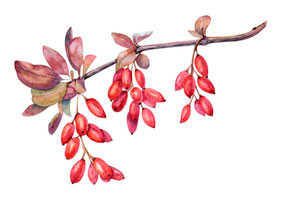 The use of barberry dates back thousands of years: references to it have been found on clay tablets from the personal library of the Assyrian Emperor Ashurbanipal, as long ago as 650 BC, evidence of its use to treat various infections.
The use of barberry dates back thousands of years: references to it have been found on clay tablets from the personal library of the Assyrian Emperor Ashurbanipal, as long ago as 650 BC, evidence of its use to treat various infections.
In the last few years, science has identified the reason for its popularity: barberry contains berberine, a powerful alkaloid which targets the cellular DNA of bacteria (17). But what makes barberry so extraordinary is that it also produces a flavonolignan (5’-MHC) which inhibits the bacterial resistance pumps responsible for extruding berberine from the cells. As a result, berberine accumulates in bacterial cells and its anti-bacterial power increases by a factor of 16 (18)!
Recommendation: to benefit from barberry’s considerable properties, it’s wise to choose natural barberry supplements standardised in berberine.
8) Honey
Honey too has been a part of traditional medicine for thousands of years, and again, this is no coincidence. We now know that it stems the growth of bacteria due to the plant-source substances it contains, flavonoids and non-peroxide inhibin, as well as enzymes secreted by bee salivary glands which produce antibiotic inhibin (19) in honey. Some hospitals are so convinced by honey’s effects that they are now using it for wound-healing.
Recommendation: dilute it in a warm drink, ideally at a drinkable temperature as heat destroys the antibiotic substances. For the same reason, don’t leave it too long to consume your honey and keep it away from light.
9) Propolis
Like honey, propolis has been used by humans for thousands of years. With its incredibly rich biological content, it is one of Nature’s most astonishing creations. It’s a type of coating produced by bees to make the interior of their hive more resistant to microbial and fungal attack.
Scientifically-supported, the antibiotic effects of propolis are due to several exceptional compounds: galangin, kaemperfol, cinnamic acid and artepillin C. They act directly on microorganisms by inhibiting cell division and disrupting the process of adhesion.
Recommendation: there are many types of propolis but the most nutritionally-beneficial are those produced in the richest, most natural ecosystems, such as Brazilian green propolis.
As you can see, there are many natural ways of reducing your risk of winter infections. Even if you choose to use just three of the nine options we’ve described, you’ll be significantly increasing your chances of an infection-free winter. To recap, they are listed below with their possible forms:
- Ginseng (infusion or supplement).
- Vitamin C (supplement).
- Mushroom polysaccharides (supplement).
- Royal jelly (from a jar or supplement).
- Zinc (supplement).
- Essential oils (diffusion, inhalation or supplement).
- Barberry (supplement).
- Honey (fresh, from a jar)
- Propolis (dry extract or supplement).
And to enhance their effects still further, here are five additional measures to adopt alongside your winter supplementation regime:
- Increase your consumption of fruit and vegetables to maximise your intake of endogenous antioxidants. By helping to reduce oxidative stress, they will add extra life to your immune defences.
- Keep away from people with infections: viruses spread primarily by microdroplets released into the air by coughs and sneezes.
- Ensure you get enough sleep: you need at least 7 hours a night to maintain effective immune defences.
- Avoid chemical-based cleaning products and cigarette smoke, and eat as few pesticide-treated fruits and vegetables as possible. Exposure to such elements damages the immune system.
- And since poor diet is the most common cause of weak immunity, be extra careful as winter approaches, and consider taking a multivitamin supplement. Even mild deficiency in certain micronutrients (selenium, copper, vitamin E, vitamin A, etc), can have an significant effect on immune response.
References
- Hasegawa H. Proof of the mysterious efficacy of ginseng: basic and clinical trials: metabolic activation of ginsenoside: deglycosylation by intestinal bacteria and esterification with fatty acid. J Pharmacol Sci. 2004;95:153–157
- Scaglione F, Cattaneo G, et al. Efficacy and safety of the standardised Ginseng extract G115 for potentiating vaccination against the influenza syndrome and protection against the common cold [corrected]Drugs Exp Clin Res 1996;22(2):65-72.
- Heimer KA, Hart AM, et al. Examining the evidence for the use of vitamin C in the prophylaxis and treatment of the common cold. J Am Acad Nurse Pract. 2009 May;21(5):295-300.
- Masuda Y, Ito K, Konishi M, Nanba H. A polysaccharide extracted from Grifola frondosa enhances the anti-tumor activity of bone marrow-derived dendritic cell-based immunotherapy against murine colon cancer. Cancer Immunol Immunother. 2010 Oct;59(10):1531-41.
- Adachi K, Nanba H, Kuroda H. Potentiation of host-mediated antitumor activity in mice by beta glucan obtained from Grifola frondosa (maitake). Chem Pharm Bull 1987;35:262-70.
- Ramadan MF, AlSGhamdi A. Bioactive compounds and healthS promoting properties of royal jelly: A review. J FunctFoods.2012 Jan;4(1):39–52.
- Singh M, Das RR. Zinc for the common cold. Cochrane Database Syst Rev. 2011 Feb
- Schnitzler, P., K. Scho¨n, and Reichling. J. (2001). Antiviral activity of Australian Tae tree oil and Eucalyptus oil against herpes simplex virus in cell culture. Pharmazie, 56: 343–347.
- Koch C, Reichling J, Schneele J and Schnitzler P:(2008). Inhibitory effect of essential oils against herpes simplex virus type 2. Phytomedicine, 15: 71–78.
- Astani A., Jürgen Reichling and Paul Schnitzler (2011). Screening for Antiviral Activities of Isolated Compounds from Essential Oils Evidence-Based Complementary and Alternative Medicine. 8 pages.
- Schuhmacher A, Reichling J and Schnitzler P. (2003). Virucidal effect of peppermint oil on the enveloped viruses herpes simplex virus type 1 and type 2 in vitro. Phytomedicine, 10: 504–510.
- Prescott LM, Harley JP, Klein DA (1995) Microbiologie. De Boeck ed. p 1014
- Jones JDG, Dangl JL (2006) The plant immune system. Nature. 444: 323-329
- Murphy Cowan M (1999) Plants as antimicrobial agents. Clin. Microbiol. Rev. 12: 564-582
- Kalemba D, Kunicka A (2003) Antibacterial and antifungal properties of essential oils. Curr. Med. Chem. 10: 813-829
- Burt S (2004) Essential oils: their antibacterial properties and potential applications in foods a review. Int. J. Food Microbiol. 94: 223-253
- Stermitz FR, Tawara-Matsuda J, Lorenz P, Mueller P,Zenewicz L, Lewis K (2000b) 5’-Methoxyhydnocarpin-D and pheophorbide A: Berberis species components that potentiate berberine growth inhibition of resistant Staphylococcus aureus. J. Nat. Prod.63: 1146-1149
- Stermitz FR, Beeson TD, Mueller PJ, Hsiang J, Lewis K(2001) Staphylococcus aureusMDR efflux pump inhibitors from a Berberisand a Mahonia(sensu strictu) species. Biochem. Syst. Ecol.29: 793-798
- Bogdanov S., Blumer P. (2001), Propriétés antiobitiques naturelles du miel. RSA 98 (3) 107-114
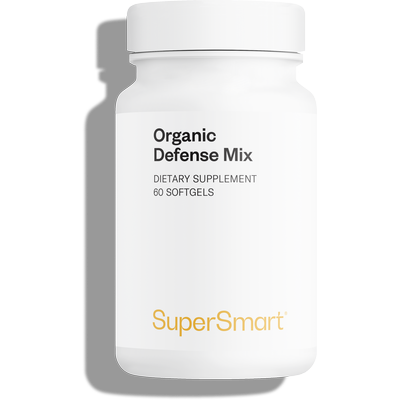
The best cocktail of organic essential oils to effectively support immunity through oral intake: peppermint, eucalyptus, oregano, lemon, spearmint, and Ceylon cinnamon
www.supersmart.com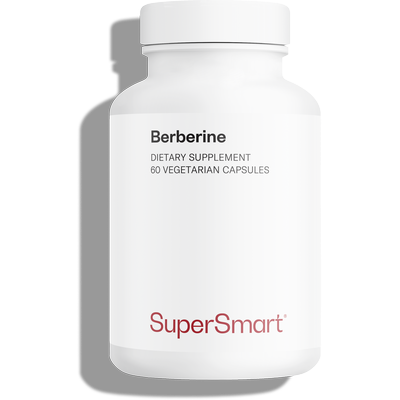
Berberine HCL: natural extract of Berberis vulgaris for cardiovascular health
www.supersmart.com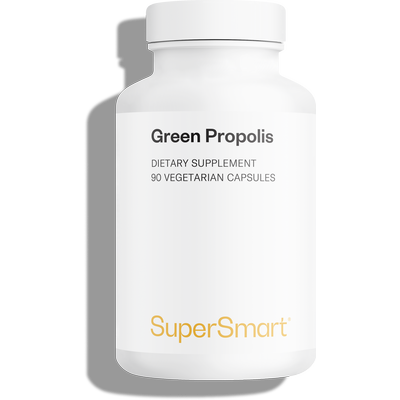
Capsules containing Brazilian green propolis, the powerful health secret of the beehive, created by bees to protect themselves against fungal, bacterial and viral infections
www.supersmart.comAll rights reserved
Free
Thank you for visiting our site. Before you go
REGISTER WITHClub SuperSmart
of exclusive benefits:
- Free: our weekly science-based newsletter "Nutranews"
- Special offers for club members only



